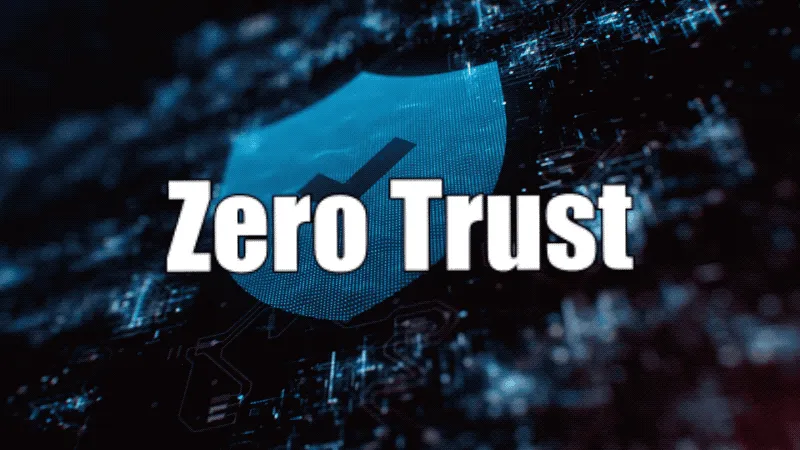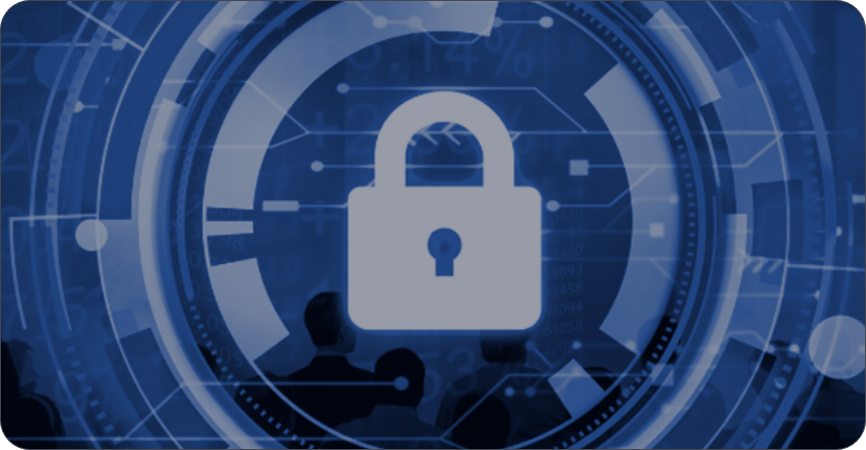Zero Trust Demystified: 5 Essential and Elusive Questions Answered
In the ever-shifting landscape of cybersecurity, organizations must constantly adapt and innovate and fortify their defenses to protect their valuable assets from sophisticated and evolving threats. One approach that has gained prominence in recent years is the Zero Trust Framework. It is a security approach predicated on the notion of “never trust, always verify.” As security leadership seeks to employ this framework to fortify their organizations, they are often confronted with a plethora of unanswered questions.
In this article, we will seek to unravel the mysteries surrounding the five key questions I continually hear as I meet with customers and security professionals all over. These questions range from aligning the Zero Trust Framework with existing security architecture and policies to measuring its effectiveness and determining when success has been achieved. By providing further insight around these commonly asked questions, it is my hope it will help equip security professionals with the insights necessary to implement and maintain a robust Zero Trust Framework that can stand up to the daunting challenges of today’s cyber threats.
Question 1: How to Align a Zero Trust Framework with an Organization’s Existing Security Architecture and Policies?
In recent years, the Zero Trust Framework has emerged as a powerful paradigm shift in the world of cybersecurity. It revolves around the idea of “never trust, always verify,” which means that organizations should not implicitly trust any user, device, or network, whether internal or external. Instead, they should continuously validate and authenticate every access request, regardless of its origin. World-class implementations of a Zero trust framework attempt to achieve most of this additional validation and authentication largely behind the scenes so as not to take away or degrade the user experience for the organization’s employees, partners and customers. This approach is an effective way to mitigate cyber threats and protect valuable data assets, as it minimizes the likelihood of unauthorized access or breaches.
Implementing a Zero Trust Framework in an organization requires careful examination of its existing security architecture and policies to ensure seamless integration. The following steps outline the process of aligning the Zero Trust Framework with your organization’s current security setup:
1. Assess the Current State: Begin by examining your organization’s existing security infrastructure, policies, and practices. Identify any areas that need improvement or are misaligned with the Zero Trust principles.
2. Map Existing Controls: Determine which existing security controls, such as firewalls, intrusion detection systems, and access control mechanisms, can be integrated into the Zero Trust Framework. This mapping exercise helps identify gaps and overlaps, allowing you to streamline the process and optimize resource allocation.
3. Define Clear Policies: Establish clear, consistent policies that govern user, device, and network access within the organization. These policies should follow the Zero Trust principles, ensuring that access is granted only after thorough validation and authentication. Ensure that your policies cover all aspects of your organization, including remote work and BYOD scenarios.
4. Establish Strong Identity and Access Management (IAM): Implement a robust IAM system that enables secure authentication and authorization of users, devices, and applications. Utilize multi-factor authentication (MFA), single sign-on (SSO), and role-based access control (RBAC) to enforce the principle of least privilege, granting access only to the necessary resources for each individual’s role.
5. Deploy Micro-segmentation: Divide your organization’s network into smaller, isolated segments based on the function or sensitivity of data. This approach reduces the attack surface and limits the potential damage in case of a breach, as attackers cannot easily move laterally within the network.
6. Continuously Monitor and Log: Implement continuous monitoring and logging of network activity, user behavior, and access requests. This data allows for real-time analysis and alerts, enabling rapid detection and response to potential threats.
7. Regularly Review and Adjust: Periodically review your security architecture and policies to ensure they remain effective and aligned with the Zero Trust Framework. As the threat landscape evolves and your organization grows, adjustments may be necessary to maintain optimal security.
By following these steps, security leadership can successfully align their organization’s existing security architecture and policies with the Zero Trust Framework, enhancing overall protection and minimizing the risk of cyberattacks.
Question 2: What are the Key Components and Technologies Required for Effective Zero Trust Framework Implementation?
Implementing a Zero Trust Framework effectively necessitates the use of several key components and technologies that work together to provide a robust and secure cybersecurity environment. If your organization has already invested in the any of the items below and this investment has the capability to meet your particular needs for Zero Trust, then you should by all means use it. In fact, it is potentially a great way to slim down any costs or reduce implementation time. The following are essential elements to consider when implementing the Zero Trust Framework in your organization:
1. Identity and Access Management (IAM): A strong IAM solution is critical to the Zero Trust Framework, as it enables the proper identification, authentication, and authorization of users, devices, and applications. Implementing multi-factor authentication (MFA), single sign-on (SSO), and role-based access control (RBAC) helps ensure that users are granted access only to the resources necessary for their roles and responsibilities.
2. Micro-segmentation: Micro-segmentation is the practice of dividing the network into smaller, isolated segments based on function, data sensitivity, or other relevant factors. This approach limits the potential damage in case of a breach by preventing attackers from easily moving laterally within the network.
3. Network Access Control (NAC): NAC solutions ensure that only authorized and compliant devices are allowed to access the network. They continuously monitor and enforce security policies, verifying the health and compliance of connected devices and blocking access when necessary.
4. Security Information and Event Management (SIEM): A SIEM system collects, analyzes, and correlates security event data from various sources, including logs, network traffic, and user activity. SIEM helps security teams detect and respond to potential threats in real time, enabling rapid incident resolution and minimizing damage.
5. Data Loss Prevention (DLP): DLP solutions monitor and control the movement of sensitive data, both within the organization and across its perimeter. They help prevent unauthorized access, exfiltration, and disclosure of sensitive information, which is crucial for maintaining data integrity and compliance with regulations.
6. Encryption: Encrypting data at rest, in transit, and during processing adds an additional layer of security, ensuring that even if unauthorized access occurs, the data remains unreadable and useless to attackers.
7. Endpoint Security: A comprehensive endpoint security solution, including anti-malware, host-based intrusion prevention systems (HIPS), and endpoint detection and response (EDR) technologies, helps protect devices from malware, exploits, and other threats, reinforcing the Zero Trust Framework.
8. Cloud Access Security Brokers (CASB): As organizations increasingly adopt cloud services, CASBs help enforce security policies and controls for cloud applications and data, ensuring that they adhere to the Zero Trust principles.
9. Threat Intelligence: Integrating threat intelligence feeds and platforms into your security ecosystem can help you stay informed about emerging threats and vulnerabilities, enabling proactive defense strategies and informed decision-making.
10. Continuous Monitoring and Analytics: Continuously monitoring and analyzing network activity, user behavior, and access patterns allows security teams to detect anomalies and potential threats quickly, ensuring swift response and mitigation.
By leveraging these key components and technologies, security leadership can implement a Zero Trust Framework effectively, significantly enhancing their organization’s overall cybersecurity posture.
Question 3: How to Measure the Effectiveness and Success of a Zero Trust Framework in an Organization
Evaluating the effectiveness and success of a Zero Trust Framework implementation within an organization is crucial to ensuring that the framework is functioning as intended and providing the desired level of security. While there are several objective elements listed below to measure and evaluate, you should also consider some subjective elements around the soft benefits like brand reputation protection, customer loyalty, and others. The following metrics and indicators can help security leadership measure the impact of their Zero Trust implementation:
1. Reduction in Security Incidents: One of the most telling signs of a successful Zero Trust implementation is a noticeable decrease in the number and severity of security incidents. Track the number of breaches, unauthorized access attempts, and other incidents before and after the implementation to quantify the improvement.
2. Faster Incident Detection and Response: Zero Trust Frameworks emphasize continuous monitoring and real-time analytics, which should lead to faster detection and response times for security incidents. Measure the average time it takes to detect and respond to incidents and compare these figures to pre-implementation data.
3. Compliance Metrics: Ensuring compliance with various industry standards and regulations is an essential aspect of maintaining a secure environment. Monitor compliance metrics, such as the percentage of devices meeting security policy requirements or the number of data access policy violations, to assess the effectiveness of your Zero Trust implementation.
4. User Access Metrics: Analyzing user access patterns, such as the number of unique users with access to sensitive resources, the percentage of users with the least privileged access, or the number of successful MFA challenges, can provide insight into how well the Zero Trust principles are being enforced in the organization.
5. Network Segmentation Metrics: Assess the effectiveness of your micro-segmentation implementation by monitoring metrics like the number of network segments created, the percentage of traffic traversing segment boundaries, and the number of attempted unauthorized segment access incidents.
6. Security Maturity Level: Assess the overall security maturity of your organization by using industry-standard maturity models, such as the NIST Cybersecurity Framework or the CIS Controls. Compare your organization’s maturity level before and after the Zero Trust implementation to determine its impact on your security posture.
7. Employee Awareness and Training: Zero Trust Frameworks require a comprehensive understanding of security policies and procedures by employees. Measure the effectiveness of training programs, such as the percentage of employees who have completed training or the results of simulated phishing attacks, to gauge the organization’s preparedness for a Zero Trust environment.
8. Return on Investment: Evaluate the financial impact of implementing the Zero Trust Framework, including costs associated with technology acquisition, deployment, and maintenance, as well as any financial benefits resulting from the reduction in security incidents or increased operational efficiency.
Reviewing, analyzing, and sharing these metrics with executive leadership will enable security leadership to assess the effectiveness and success of their Zero Trust implementation. By addressing any areas of concern, ensuring gaps are handled properly, and continuously refining the framework, organizations can maintain a robust cybersecurity posture that aligns with the evolving threat landscape.
Question 4: What are the Potential Challenges and Obstacles in Adopting a Zero Trust Framework and How to Address Them
Adopting a Zero Trust Framework can bring significant benefits to an organization’s cybersecurity posture. However, it is not without some challenges and obstacles. Security leadership should be aware of these potential issues and devise strategies to address them effectively and early. Some of the most common challenges and their respective solutions include:
1. Resistance to Change: A Zero Trust implementation often requires a significant shift in mindset and approach to security, which may be met with resistance from employees and stakeholders. To address this challenge, communicate the benefits and rationale behind the Zero Trust Framework clearly and consistently. Engage in training and awareness programs to help employees understand their role in maintaining a secure environment.
2. Complexity of Implementation: Implementing a Zero Trust Framework can be complex, involving multiple technologies and processes. To streamline the process, develop a phased implementation plan that prioritizes the most critical security gaps and incrementally builds upon them. Engage with experienced consultants or service providers to help navigate the intricacies of the implementation.
3. Integration with Existing Infrastructure: Integrating the Zero Trust Framework with existing security infrastructure can be a significant challenge. To ensure seamless integration, perform a thorough assessment of your current security architecture and identify the areas that need improvement or realignment with the Zero Trust principles. Leverage existing technologies and solutions where possible, and invest in new tools only when necessary.
4. Legacy Systems and Applications: Organizations often rely on legacy systems and applications that may not be compatible with Zero Trust principles. To address this issue, consider modernizing or replacing these systems with more secure alternatives that align with Zero Trust principles. If that is not feasible, develop compensating controls and monitoring mechanisms to mitigate the risks associated with these legacy systems.
5. Balancing Security and User Experience: Implementing a Zero Trust Framework may initially result in a perceived increase in friction for end-users due to more stringent access controls and authentication requirements. Strive to strike a balance between security and user experience by implementing user-friendly solutions like single sign-on (SSO) and adaptive multi-factor authentication (MFA) that adjust to the user’s context and risk level.
6. Scalability and Performance: As organizations grow and evolve, the Zero Trust Framework must be able to scale and adapt to meet changing needs. Ensure that your chosen technologies and solutions can scale with your organization without compromising performance or security.
7. Continuous Monitoring and Improvement: Maintaining an effective Zero Trust environment requires ongoing monitoring and adaptation. Invest in technologies and processes that enable continuous monitoring, analytics, and threat intelligence. Regularly review and update your security policies, controls, and technologies to stay aligned with the evolving threat landscape and the needs of your organization.
Proactively addressing the challenges and obstacles that your organization may face will help security leadership pave the way for a successful Zero Trust Framework adoption, ultimately enhancing their organization’s overall security posture.
Question 5: How to Recognize a Successful Zero Trust Framework Implementation
Achieving a successful Zero Trust Framework implementation is an ongoing process that requires continuous monitoring, assessment, and improvement. However, there are several indicators that can help security leadership recognize when they have reached a mature and effective Zero Trust environment:
1. Reduction in Security Incidents: A successful Zero Trust implementation should lead to a noticeable decrease in security incidents, breaches, and unauthorized access attempts. Track and compare the frequency and severity of incidents before and after implementing the framework to measure its effectiveness.
2. Improved Compliance Metrics: Ensuring compliance with industry standards and regulations is a key aspect of a mature Zero Trust environment. Monitor your organization’s compliance metrics, and if you observe a consistent improvement in meeting requirements and reducing violations, this is a sign of a successful implementation.
3. Streamlined Access Control: In an effective Zero Trust environment, user access should be consistently and efficiently governed by the principle of least privilege. Assess whether access controls are granular and role-based, and whether users are granted access to only the resources necessary for their roles.
4. Faster Incident Detection and Response: A mature Zero Trust implementation should enable rapid detection and response to security incidents. If your organization consistently demonstrates the ability to detect and mitigate threats quickly, this is a strong indication of a successful Zero Trust Framework.
5. Robust Micro-segmentation: Effective network segmentation, which limits lateral movement and reduces the attack surface, is a hallmark of a successful Zero Trust environment. Assess the degree to which your organization has achieved granular micro-segmentation and monitors segment boundaries for unauthorized access.
6. Employee Awareness and Training: The success of a Zero Trust Framework is highly dependent on employees understanding and adhering to security policies and procedures. A high level of employee awareness and participation in security training programs is an indication of a well-established Zero Trust culture.
7. Consistent Security Maturity Level: Assess your organization’s security maturity using industry-standard models, such as the NIST Cybersecurity Framework or the CIS Controls. A mature and successful Zero Trust implementation should result in consistently high-security maturity ratings.
8. Positive Return on Investment (ROI): If your organization can demonstrate a positive ROI on the Zero Trust implementation, including reduced security incidents, increased operational efficiency, and improved compliance, this is a strong indication of success.
9. Ongoing Improvement and Adaptation: A successful Zero Trust environment requires continuous evaluation and improvement. If your organization is consistently reviewing and updating its security policies, controls, and technologies to stay aligned with the evolving threat landscape, this demonstrates a successful and mature Zero Trust implementation.
By considering and evaluating some of these relevant indicators and continually striving to optimize your organization’s Zero Trust environment, you can achieve and maintain a successful and effective Zero Trust Framework that significantly enhances your cybersecurity posture and reduce your organization’s risk.
There is Power in a Zero Trust Approach
Ultimately, embracing a Zero Trust approach offers a powerful method to strengthen an organization’s cybersecurity posture amidst growing attack surfaces and the evolving threat environment. It has become increasingly evident over the last couple of years that the successful implementation of a Zero Trust framework is a multifaceted endeavor that takes some work, but it yields significant benefits for an organization’s ownership, employees, and customers.





